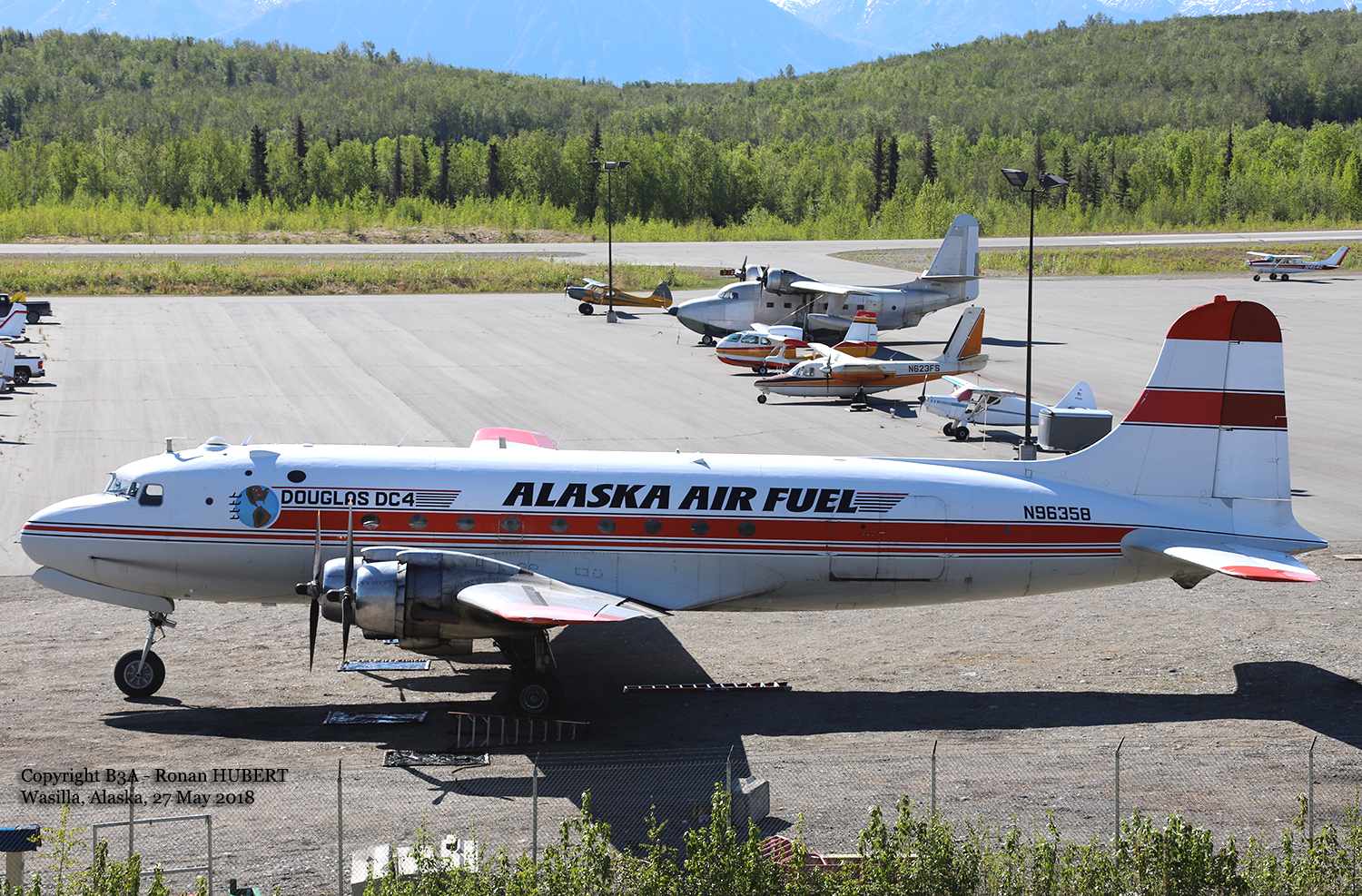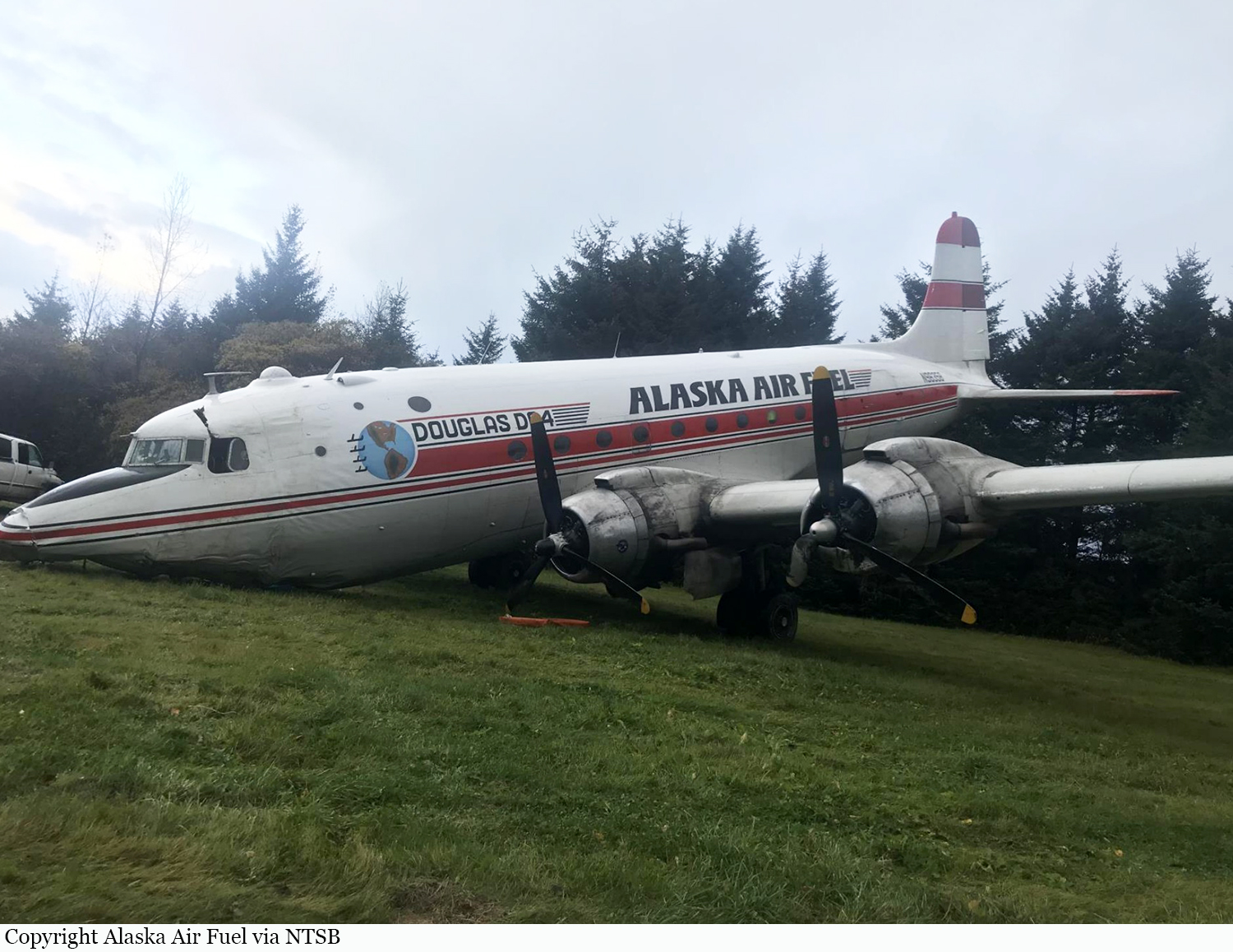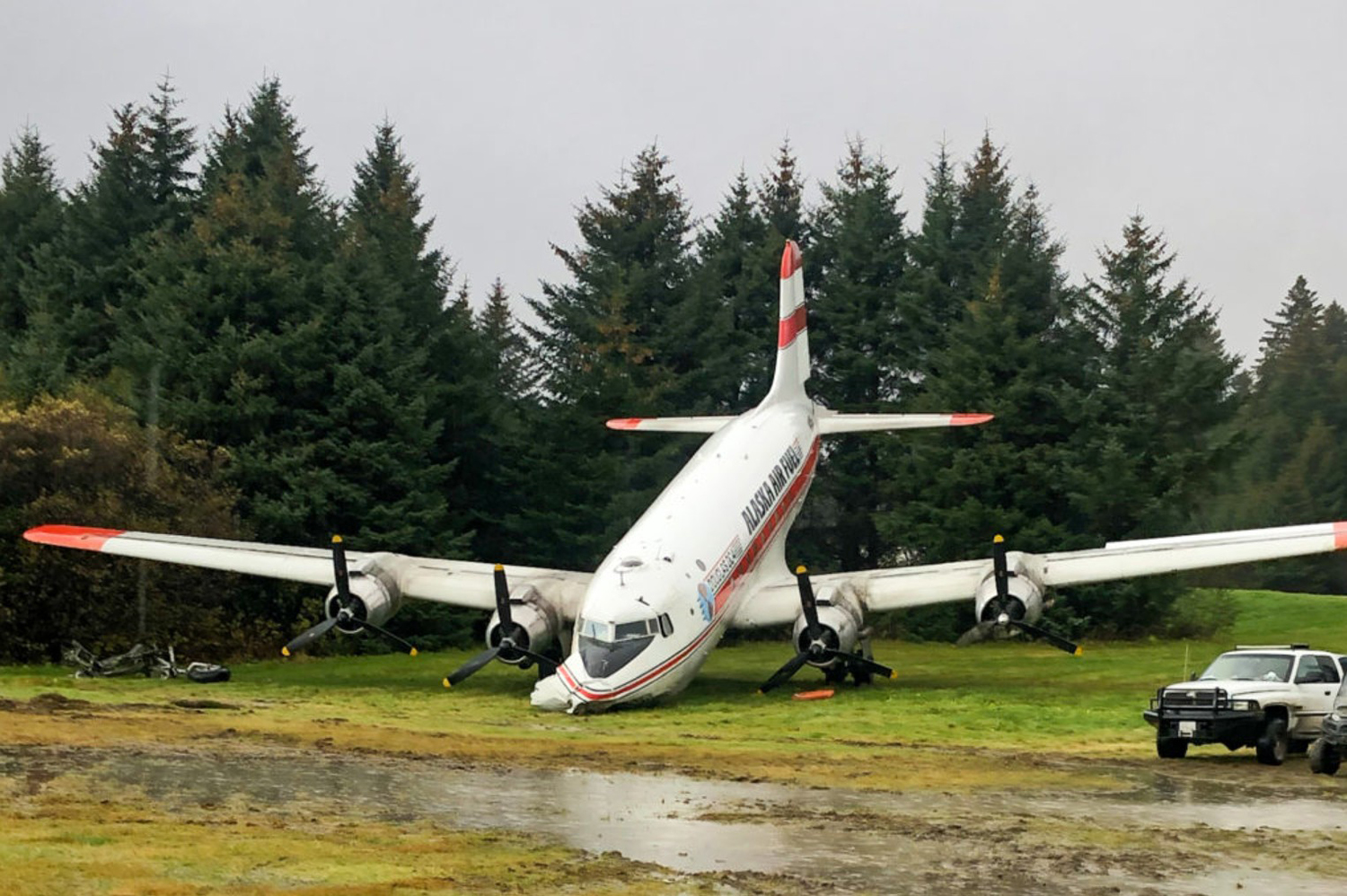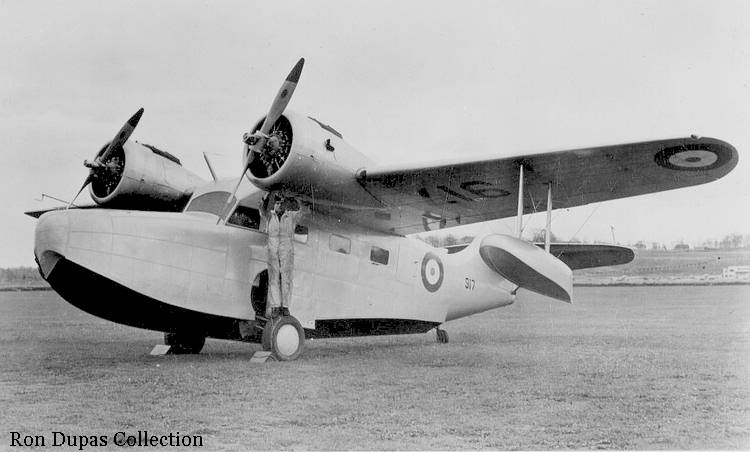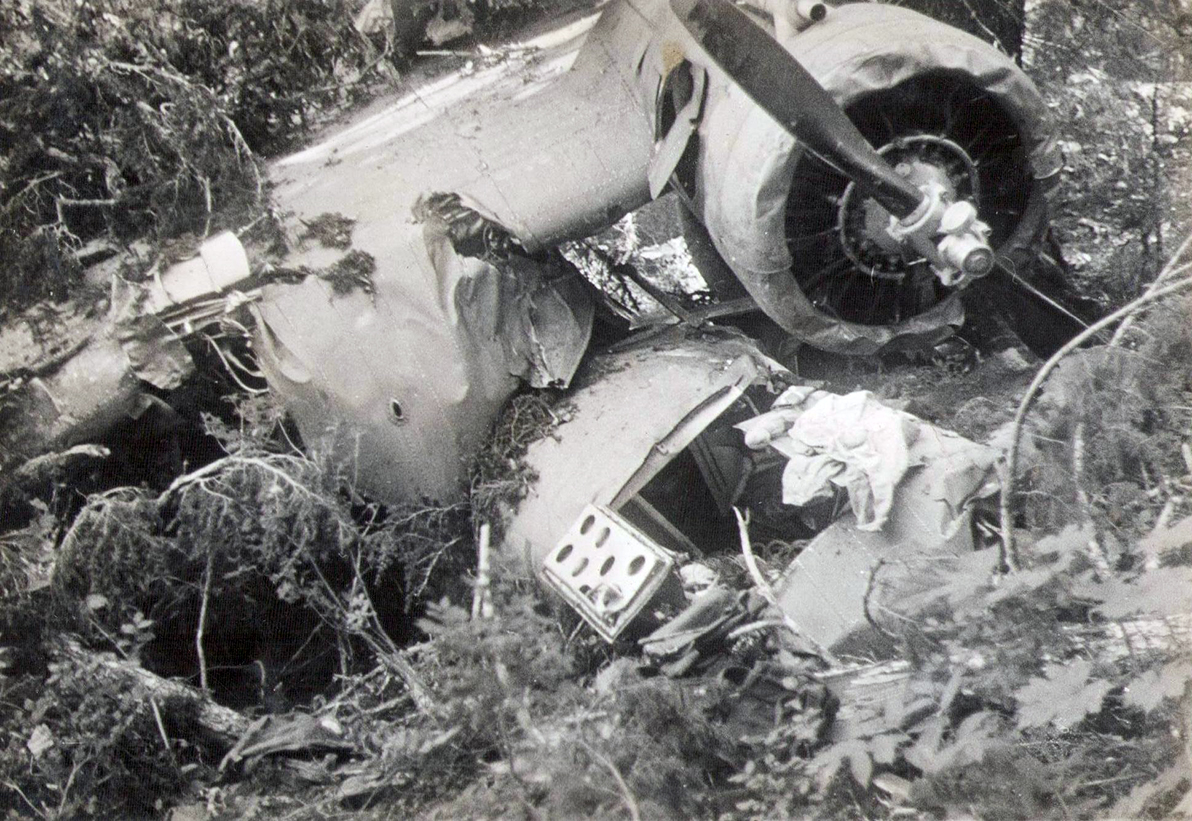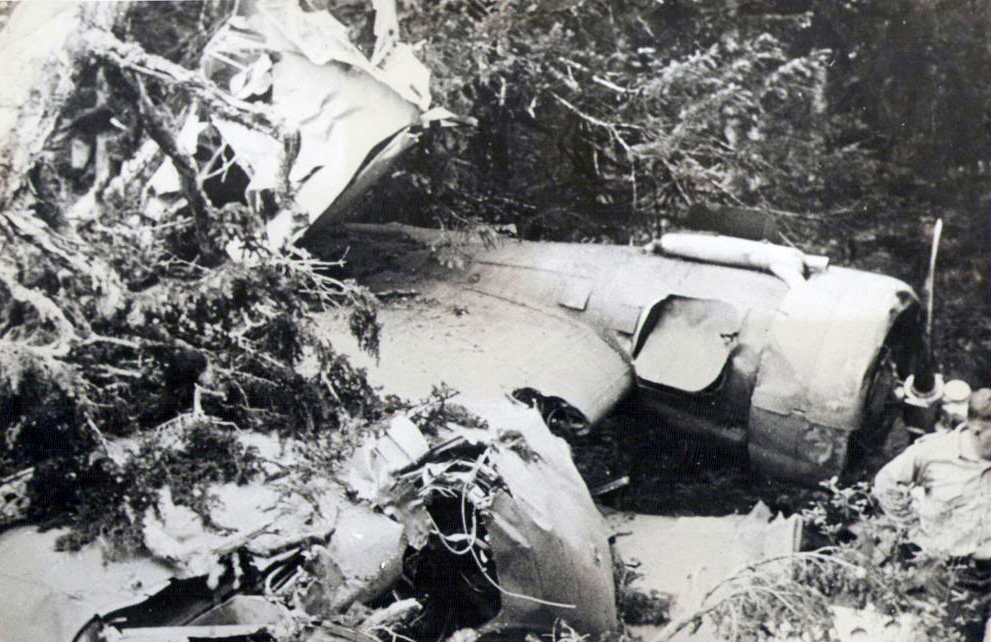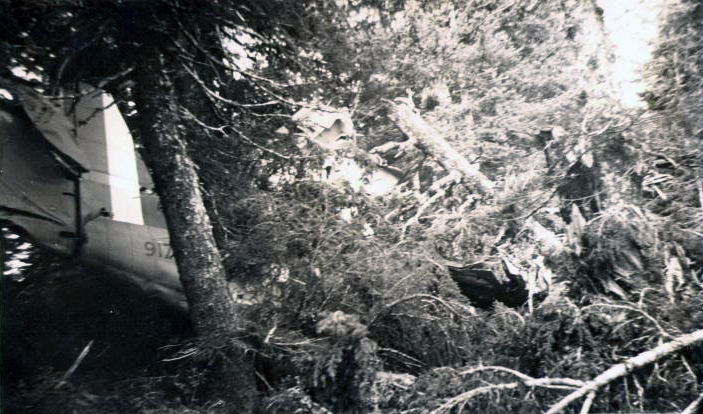Crash of a Douglas DC-4A in Yakataga
Date & Time:
Oct 10, 2020 at 1544 LT
Registration:
N96358
Survivors:
Yes
Schedule:
Kenai - Yakataga
MSN:
27284
YOM:
1944
Crew on board:
2
Crew fatalities:
Pax on board:
0
Pax fatalities:
Other fatalities:
Total fatalities:
0
Captain / Total hours on type:
2163.00
Copilot / Total hours on type:
1964
Aircraft flight hours:
33718
Circumstances:
The commercial pilot reported that the flight had been delayed for “nearly 2 weeks due to rain” but that the company had contacted their customer, who was a local resident of the area, and he had reported that the landing grass airstrip was “currently dry” and that he was unaware of any NOTAMs reporting that the runway was closed. The pilot reported that, while landing the airplane on the airstrip, the braking action was “zero” along the entire length of the runway. Subsequently, while about 5 knots, the airplane overran the end of the runway, and the nose landing gear collapsed. The airplane sustained substantial damage to the forward fuselage. The pilot reported that there were no preaccident mechanical failures or malfunctions with the airplane that would have precluded normal operation. The pilot reported that, during a formal flight brief from a Federal Aviation administration (FAA) Flight Service Station (FSS), he and the copilot asked if there was “anything special going on down there” that they should be aware of” but that FSS personnel did not mention any NOTAMs stating that the runway was closed to heavy airplanes nor was it mentioned when they activated the flight plan. However, according to FAA FSS recordings, during the first conversation, the pilot did not ask for any NOTAMs for the airport. During the second conversation, the FSS asked the pilots if they needed any weather information or NOTAMs, and the pilots responded, “no,” and that they “were all good.” A NOTAM had been issued, which stated, in part, that the landing runway was closed to aircraft that weighed more than 5,000 lbs. The airport chart supplement remarks stated, in part, that “the runway was extremely soft when wet…Use of heavy aircraft over 4,000 lbs gross not recommended during fall, winter, & spring due to” soft field conditions and rutting.” The pilot reported that the airplane’s weight was about 62,568 lbs at the time of the accident.
Probable cause:
The pilots’ decision to land on a wet, soft runway, which resulted in the loss of braking action upon landing and a subsequent runway overrun and nose landing gear collapse.
Final Report:
